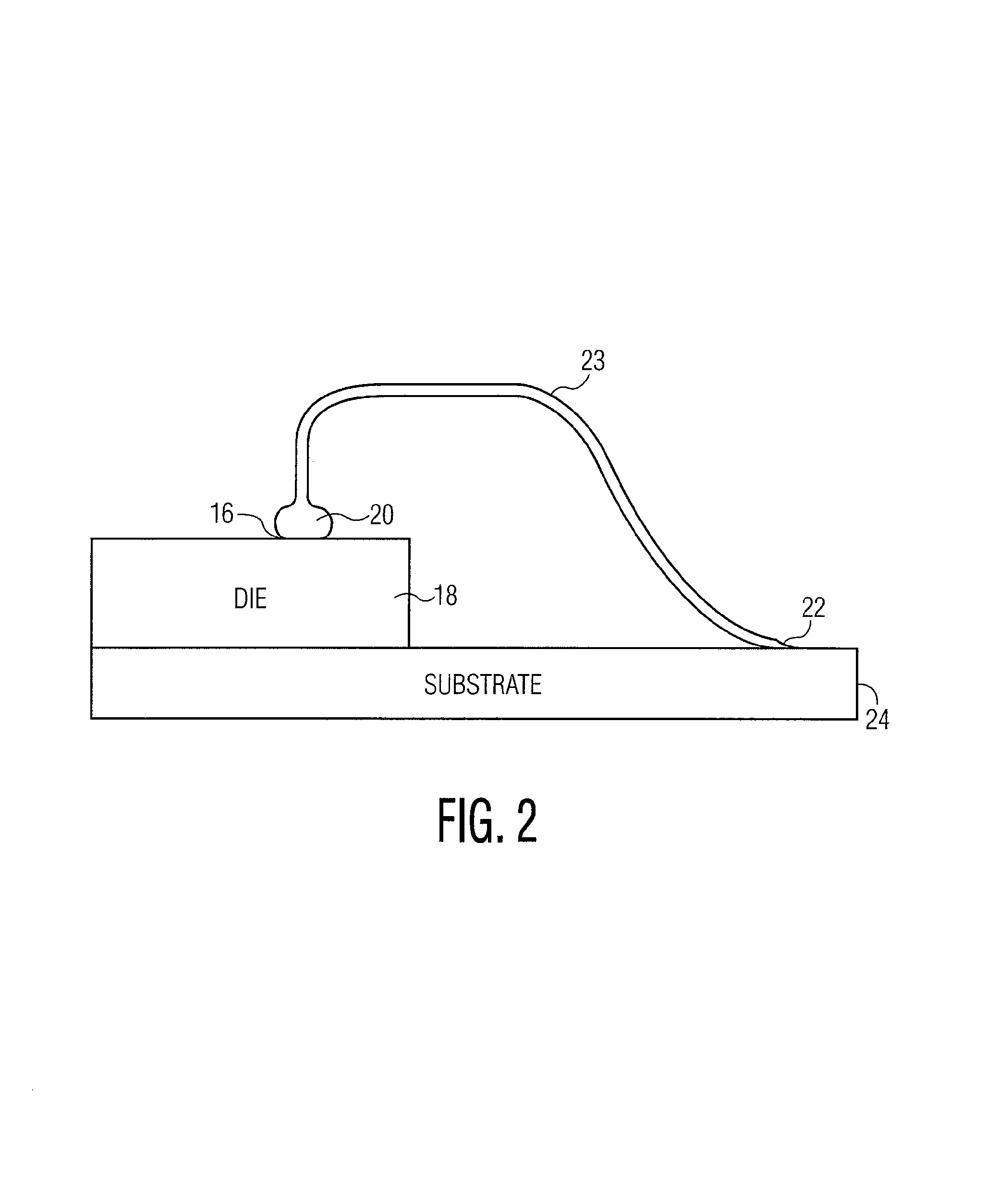Method and apparatus for forming bumps for semiconductor interconnections using a wire bonding machine
- Summary
- Abstract
- Description
- Claims
- Application Information
AI Technical Summary
Benefits of technology
Problems solved by technology
Method used
Image
Examples
Embodiment Construction
[0036]FIGS. 4A through 4F generally illustrate the position of the capillary tip and the wire at six different stages of an exemplary bump formation process in accordance with the present invention. As shown, the beginning of the bump formation process is essentially identical to the prior art techniques. Particularly, the process starts with a short distance of the wire 40 extending from the capillary 41. The wire is hit with an electric spark to cause it to melt and inherently form into a ball 42. The capillary then drops down to contact the bond site 43 and squeeze the ball against the surface of the bond site and form the initial shape of the bump as dictated by the shape of the capillary tip. Heat and / or ultrasonic energy is applied to form the bond between the ball and the surface. FIG. 4A shows the process at this point.
[0037]Next, the capillary 41 rises with the clamps (not shown) open in order to pay out a short distance of wire extending from the top of the bonded ball 42....
PUM
 Login to View More
Login to View More Abstract
Description
Claims
Application Information
 Login to View More
Login to View More - R&D
- Intellectual Property
- Life Sciences
- Materials
- Tech Scout
- Unparalleled Data Quality
- Higher Quality Content
- 60% Fewer Hallucinations
Browse by: Latest US Patents, China's latest patents, Technical Efficacy Thesaurus, Application Domain, Technology Topic, Popular Technical Reports.
© 2025 PatSnap. All rights reserved.Legal|Privacy policy|Modern Slavery Act Transparency Statement|Sitemap|About US| Contact US: help@patsnap.com



